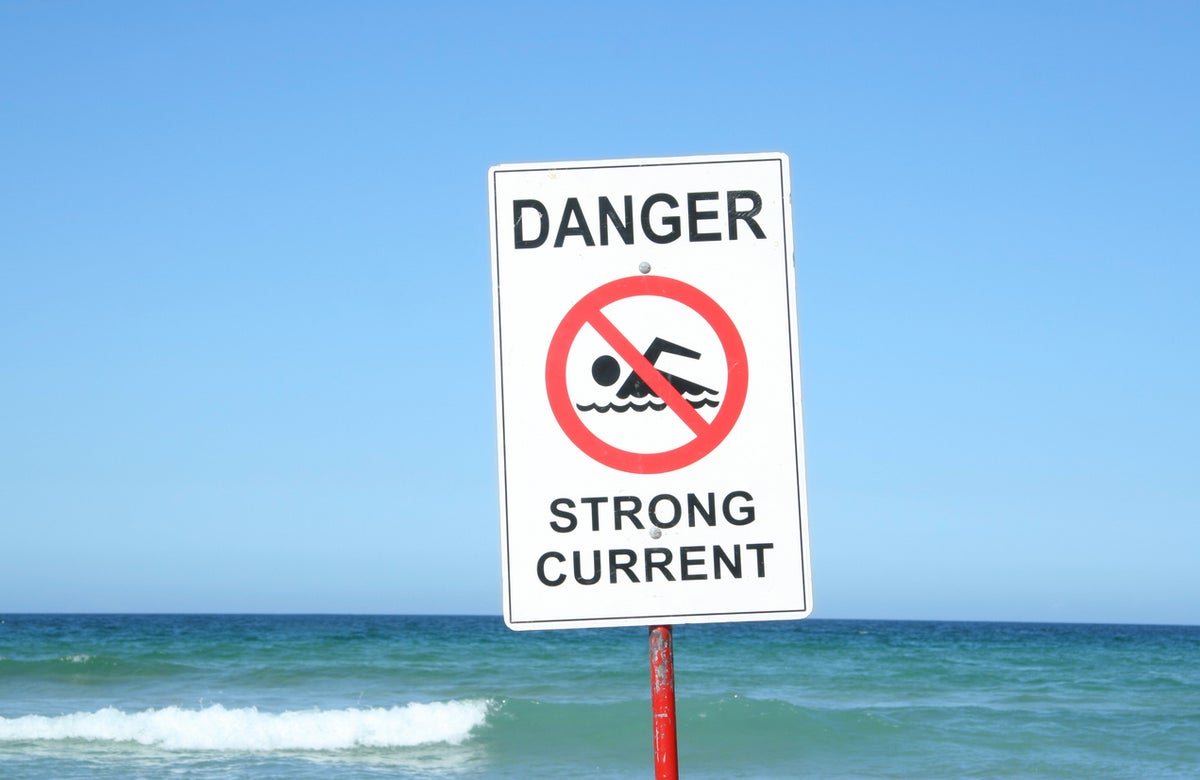
Bournemouth has been rocked by the tragic deaths of two children who got into trouble in the sea as thousands of half-term holidaymakers descended on the popular beach.
A 12-year-old girl and 17-year-old boy died after suffering critical injuries during the incident near Bournemouth Pier on Wednesday.
Eight others were pulled from the water but none of their conditions were life-threatening.
Police are still establishing what happened during the incident, but a father of one of the beach tragedy survivors has claimed his 18-year-old daughter - who spent a short time in hospital after the incident - was taken out by a "riptide".
It comes after police dismissed speculation that the victims had jumped off the pier or were hit by a vessel on the water.
Here we look at what a riptide is and what to do if you get caught in one:

What is a riptide or current?
Bournemouth Pier, like all outcrops in the ocean such as groins, headlands or sandbars, presents danger for swimmers due to riptides, or rip currents.
Rips, as they are commonly known, are strong currents that occur when water that has been pushed towards land by the sea, is tracking back out, creating a channel of water which pulls back out to sea.
Rips are often harmless, and swimmers will barely notice them, but typically around large headlands or piers, they can be powerful and drag unwitting swimmers and surfers out to sea, particularly if there is a large swell running.
They tend to flow at 1-2mph but can reach 4-5mph, which is faster than an Olympic swimmer. They can also be found in river mouths, estuaries as well as in the sea and near piers.
The Met Office has outlined important facts to know about rip currents, which are:
Calm water is not always the best place to swim: Many inadvertently end up in a rip current as a result of choosing to enter the water where there is no white water from waves. This is often where a rip is present, with ripples on the surface indicating a flow of water out to sea.
Rip currents do not pull you underwater: Rips take you away from the beach, and often eventually back to the waves. Rip current-related drowning is therefore due to panic and fatigue.
How to spot a rip
Rips can be difficult to spot but are sometimes identified by a channel of churning, choppy water on the sea’s surface.
The RNLI warns that even the most experienced beachgoers can be caught out by rips so advises “don’t be afraid to ask lifeguards for advice”.
The lifeboat charity adds that the best way to avoid rips is to choose a lifeguarded beach and always swim between the red and yellow flags, which identify where it is safe to swim in the current conditions.
What to do if you get caught in a rip
A rip tide will not pull you under the water but will try to pull you away from the shore. Don’t try to swim against it or you’ll get exhausted.
The seven tips for if you’re caught in a riptide are:
- Stay calm and don’t panic
- If you can stand, wade don’t swim
- Keep hold of your board or inflatable to help you float
- Raise your hand and shout for help
- Never try to swim directly against the rip as you will get exhausted
- Swim parallel to the beach until free of the rip, then make for shore
- If you see anyone else in trouble, alert the lifeguards or call 999 or 112 and ask for the Coastguard.







